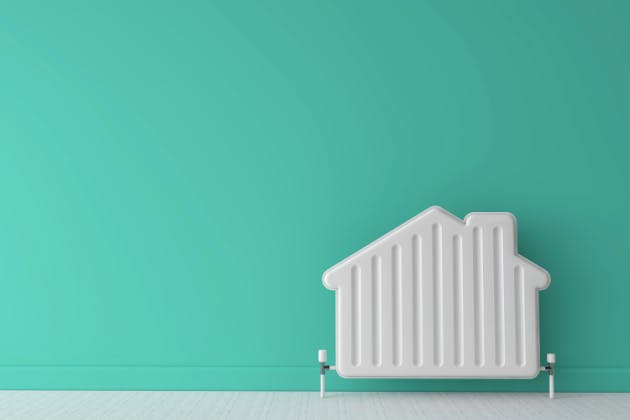If you’ve noticed that your radiators are cold at the bottom but warm at the top, it’s a common issue many homeowners experience. A radiator that isn’t heating up properly can be frustrating, especially during colder months. Fortunately, the issue is often fixable with a little troubleshooting. In this blog, we’ll explore the potential causes of cold radiators and how to resolve the problem to restore warmth to your home.
Common Reasons Radiators Are Cold At The Bottom
Air Trapped in the Radiator
One of the most common reasons for cold spots at the bottom of a radiator is trapped air. Over time, air can accumulate inside the radiator, preventing hot water from circulating properly. This causes the top of the radiator to warm up, while the bottom remains cold.
To fix this, you’ll need to bleed the radiator. This simple process releases the trapped air, allowing hot water to flow freely through the system. Use a radiator key to slowly open the valve at the top of the radiator, and let the air escape until water starts to flow out. If you’re unsure how to do this, or if the problem persists, call a heating engineer in Ealing or Acton for professional assistance.
Sludge Build-Up or Blockages
Another cause of cold radiators at the bottom is the build-up of sludge, rust, and debris inside the system. Over time, this debris can accumulate at the bottom of the radiator, restricting the flow of hot water and preventing the radiator from heating properly.
In this case, you may need to flush the radiator to remove the build-up. Flushing involves running water through the system to clear out the sludge. If you’re unable to do this yourself, it’s best to call a heating engineer in Acton or Ealing who can perform the job safely and efficiently. Regular maintenance, including power flushing, can also help prevent sludge build-up in the future.

Incorrect Valve Settings
If the valves on your radiator are not set correctly, they can restrict the flow of hot water to the bottom of the radiator. This often happens if the thermostatic valve (TRV) is set too low, preventing water from circulating evenly.
Check that the valve is fully open and not obstructed. If the radiator is equipped with a thermostatic valve, try adjusting it to a higher setting to see if this helps warm up the bottom of the radiator. If adjusting the valve doesn’t resolve the issue, you may need to replace the valve or call a heating engineer to ensure your system is functioning properly.
Problems with the Central Heating System
Cold radiators at the bottom can sometimes indicate a deeper issue with the central heating system, such as a problem with the pump, pressure, or circulation. If the pump is not working properly, it may not be circulating water efficiently throughout the system, leading to cold spots in radiators.
First, check the water pressure on your boiler. If it’s too low, this can prevent hot water from circulating effectively. You may need to top up the pressure using the filling loop on your boiler. If the pressure is correct, but the radiators are still cold at the bottom, it’s best to call a heating engineer in Ealing or Hanwell to inspect the pump and other components of your central heating system.
Trapped Debris in the Pipework
Sometimes, debris from the system can get trapped in the pipework, obstructing the flow of water. This can result in uneven heating, with cold spots at the bottom of the radiators. This is often caused by untreated water or an old system that hasn’t been properly maintained.
A heating engineer will need to inspect the system and may recommend power flushing or chemical treatment to remove the debris from the pipework. Regular boiler servicing and maintenance in Ealing and Acton can help prevent this issue from recurring.
A Faulty Thermostat
A faulty thermostat can also lead to cold radiators. If the thermostat is not reading the temperature correctly or is not activating the heating system properly, the radiator may not be receiving enough heat.
If you suspect a faulty thermostat, try recalibrating or replacing it. If the problem persists, it may be time to call in a heating engineer in Ealing or Acton to check the thermostat and other components of your heating system to ensure they’re working as they should.
Cold spots at the bottom of your radiators can be a sign of trapped air, sludge build-up, incorrect valve settings, or more complex issues within your heating system. Thankfully, most of these issues are easy to resolve with a little maintenance or professional help.
Get in touch
If you’re struggling with cold radiators or other heating problems, don’t hesitate to contact our reliable heating engineer in Acton, Hanwell, or Ealing.


